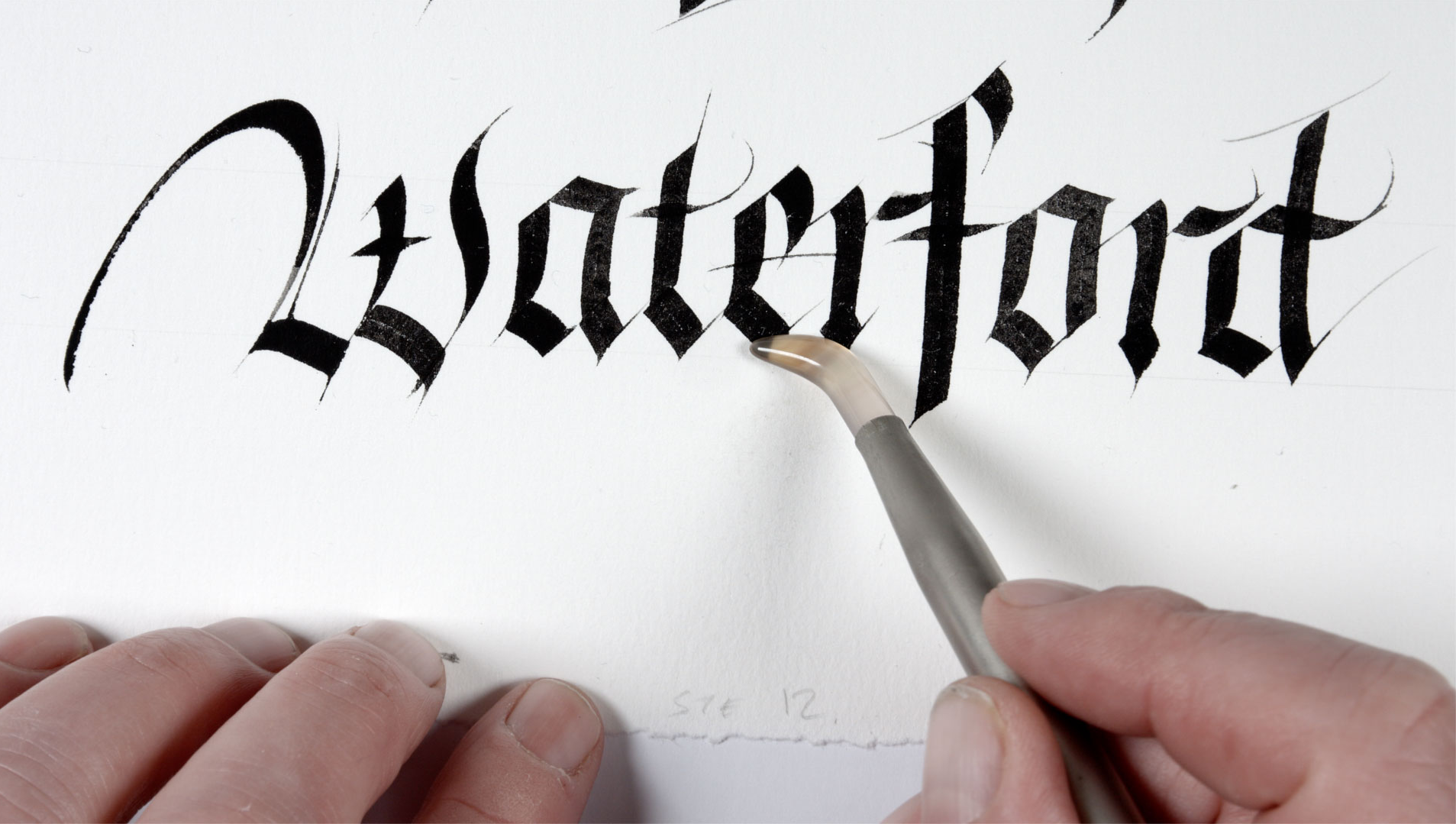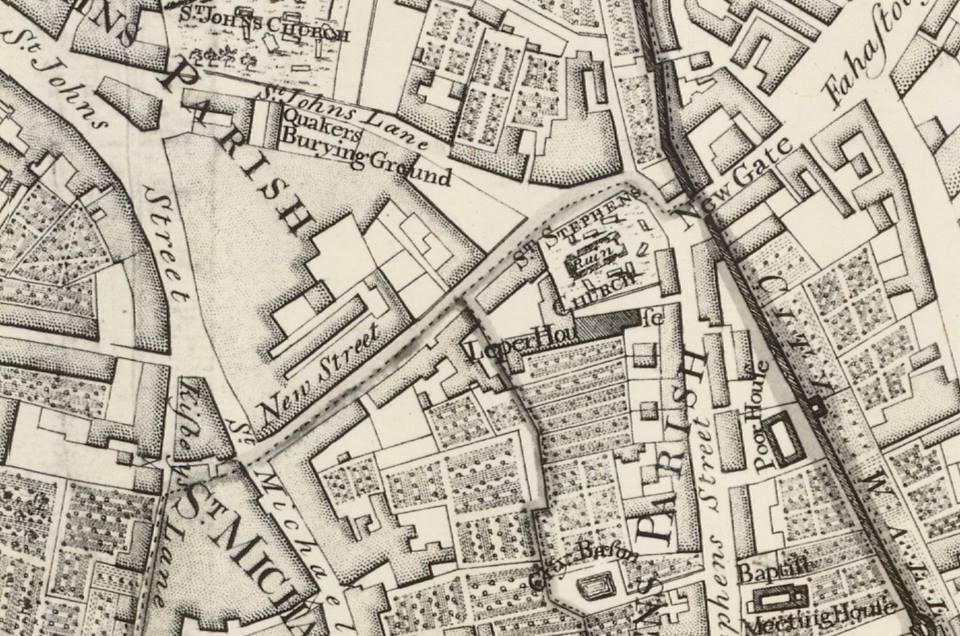
Oliver Cromwell and the siege of Waterford
From the late 1630s, there were increasing religious tensions in Ireland and this culminated in a general rebellion by Irish Catholics, which began on the 23rd October 1641. Ferocious raids were launched against areas of settler population across Ulster, as a massacre of Protestants began. Estimates for the number of Protestants killed vary between 2,000 and 4,000.
As the rebellion spread southwards, it was supported by many of the Old English Catholics in cities such as Waterford. However, in late 1641, Waterford city, under the control of its staunchly Protestant mayor Francis Briver, opposed the rebellion. The city became a haven for Protestant refugees, many of whom had been stripped of their clothes and forced to take to the roads in the middle of winter. On Christmas Eve, 300 refugees gathered on the northern bank of the Suir, asking for relief and they were admitted into the city.
In the meantime, a force of Catholic rebels crossed the river Suir at Faithlegg. Rampaging through the countryside they came to within a musket shot of the city walls and only the sight of the municipal cannon deterred them from taking the city. Waterford was under siege again.
In March 1642, a large rebel army appeared at the walls of Waterford demanding the surrender of the city. When the mayor again refused to surrender the city the majority Catholic population revolted and opened the gates. All the Protestants living in or near the city were rounded up and deported to England.
The rebellion in Ireland was further complicated by the outbreak of civil war in England in 1642 between the supporters of King Charles I and of Parliament led by Oliver Cromwell. No troops could be spared for combating the Irish Catholic rebels who formed the Catholic Confederation to rule the area of the country under their control.
The members of the Catholic Confederation professed loyalty to King Charles I and the motto of the Confederation was Pro Deo, Pro Rege, Pro Patria (for God, for king, for country). The Confederation met at Kilkenny and at Waterford and Thomas Burke of Waterford was the official printer of the confederation. An example of the material printed by Burke is now on display in the Medieval Museum. The Waterford-born Franciscan friar, Luke Wadding, was the Catholic Confederation ambassador to the pope in Rome. He arranged for a special representative from the pope – a papal nuncio to be sent to Ireland. His name was Cardinal Giovanni Battista Rinuccini, and he spent a lot of time in Waterford, staying with a cousin of Luke Wadding.
Following the defeat and execution of King Charles I in 1649, Oliver Cromwell turned his attention to Ireland. He landed at Dublin in mid-August that year, determined to subdue the country as quickly as possible and also to avenge the massacres of Protestants in 1641. He captured both Drogheda and Wexford slaughtering some 4,600 people in these two towns.
By November, he was outside the walls of Waterford and demanded the surrender of the city by means of a formal letter to the mayor and City Council, which he signed as “Your Loving friend, Oliver Cromwell”.
The garrison in Waterford refused to surrender and Cromwell laid siege to the city. However, he failed to capture Waterford and by December he was forced to break off the siege and move his army to winter quarters. His army camped at Kilbarry just outside the city and was suffering from sickness and short of supplies. In a report to the parliament in London, Cromwell wrote that a “considerable part of the army is fitter for a hospital than the field”. Over 1,000 Cromwellian troops died outside Waterford from fever.
Cromwell was bitterly disappointed as he had wished to secure Waterford before the end of the year, and this disappointment can be felt in his report on his retreat from Waterford; “it being so terrible a day I ever marched in my life. We marched that night some ten or twelve miles through a craggy country to Kilmacthomas.”
Soon afterwards, Cromwell left Ireland and returned to England. He never returned to Ireland.
The respite for Waterford was short lived however. The following June his army was back – this time led by his son-in-law, General Henry Ireton. By now the city garrison was short of food and munitions. General Ireton commenced an artillery bombardment of the city. He also sent ships up the River Suir and bombarded the walls – including Reginald’s Tower – with cannon. One of the cannonballs fired from his ships in the river is still lodged in the wall of tower and can be seen there to this day – 364 years later!
The defending garrison were only able to offer a token resistance and within a short period Waterford fell to General Ireton’s troops. They ransacked the city in search of valuables and paid particular attention to the churches – looking for the gold and silver chalices and other church plate. Most of the gold and silver cathedral treasures were discovered and melted down. It was reported that the soldiers even took the organ pipes from the cathedral, laid them out along the quay and cut them up to sell as scrap metal. However, one of the great treasures of the city escaped destruction – the magnificent 15th century cloth-of-gold vestments. They had been hidden away, locked in iron chests and buried in a deep vault beneath Christ Church Cathedral. They were probably concealed just before the city fell in the summer of 1650 – by a group of people who never revealed the secret of the vault.
Here the vestments remained hidden for a further 123 years until they were discovered when the medieval building was demolished in 1773 in order to build the present Church of Ireland Anglican cathedral. The Church of Ireland bishop realised that these vestments dated to before the Reformation and in a gesture of goodwill he presented them to the Catholic dean at the time.
The Waterford cloth-of-gold vestments had survived destruction and this is the only complete set of medieval High Mass vestments to survive anywhere in Northern Europe. They are now on display in the magnificent award winning Medieval Museum.



